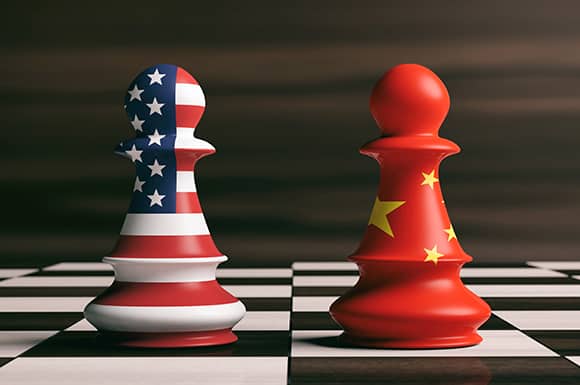The US-China trade war: a tale of incompatible economic models?
Published on 11/24/2019
Thematics :
The US-China trade war: a tale of incompatible economic models?
Published on 11/24/2019
On the one hand, we have a strong socialist dimension. On the other, a resolutely international outlook. The US-China trade war has its roots in the conflict between these two models, incapable as they are of understanding one another or coexisting. Huaiyuan Han, Professor of International Management and Geopolitics at NEOMA Business School, offers his expert insight into the Chinese economy.
 In December 2018, China celebrated 40 years since its economy was reformed and opened up. What prompted this transformation?
In December 2018, China celebrated 40 years since its economy was reformed and opened up. What prompted this transformation?
The aim was to stimulate the Chinese economy by introducing both market economy mechanisms and external economic factors, such as foreign investment and competition, international division of labour and compliance with international trade rules.
In 1978, China opened four special economic zones (SEZs) to gradually introduce a market economy into the planned economy in place at that time.
Deng Xiaoping’s decision in 1992 not to go back to a planned economy, but to continue expanding the market economy, marked a turning point in the history of reform in China.
1993 then saw the concept of a “social market economy” introduced into China’s constitution.
On 14 March 1993, 23 private entrepreneurs became members of the Chinese People's Political Consultative Conference (CPPCC), sending out a clear signal that China was moving ever closer towards a market economy.
Finally, in November 2001, after 15 years of hard work, the country officially joined the World Trade Organization and, in doing so, voluntarily accepted the constraints imposed by international trade rules.
Surely this new economic structure should have made international trade easier?
In the US-China trade war, the United States is seeking to force the Chinese government to comply with international market economy rules by, for example, banning forced technology transfers as a prerequisite for market access, enhancing intellectual property protections and reducing subsidies to state-owned companies.
It is important to understand that the Chinese constitution did not establish a market economy in the traditional Western sense, but rather a socialist market economy. Here, the notion of “socialism” is a clear reference to the Chinese Communist Party’s absolute leadership within the economy, to the government’s active intervention in the economy, to the development and implementation of industrial policies and to the dominant status of state-owned companies.
So, it seems there’s no end in sight...
With China and the socialist dimension of its market economy in one corner and, in the other, the West’s major economic powers applying international market economy standards, the war will continue for as long as these two economic systems and the views of those in power remain at odds.

